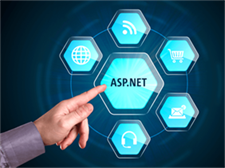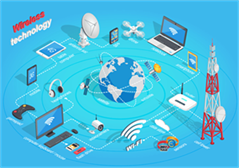Aidi Inu AIDI Price Ticker Widget
18 Luglio 2022Bitcoin Superstar Review
19 Luglio 2022What Is Fog Computing And How Does It Relate To Both Cloud And Iot?
Содержание
To the authors’ knowledge, no previous research work focused on analysing the cost of communication of CEP-based fog and cloud architectures. One drawback of CEP is that it can potentially exhibit heavy storage requirements related to the amount of simple events that need to be stored for analysis. However, it should be noted that in the context of IoT, even though devices generate data streams continuously, these data need to be analyzed within a short period of time to be meaningful and harness the potential of fog computing.

It can’t replace cloud computing data because cloud computing is a centralized process that is the need for some time. On the other hand, regarding latency, the work highlights how a fog computing architecture considerably reduces latency with respect to cloud computing, up to 35% better. Breaking down the latency results, we can also see how the Broker is the critical element of the increase in latency. In this context, we can see in Fig.9 how using a fog computing architecture reduces latency considerably, that is, the notification of an event arrives earlier to Final Users than in a cloud computing architecture. Thus, it can be seen from this study that the fog computing approach allows recipients in the area of coverage of the Fog Node to receive the alarm with a significantly lower latency than those recipients connected by telephony network.
Types Of Cloud Computing
Connecting your company to the cloud, you get access to the above-mentioned services from any location and via different devices. Moreover, there is no need to maintain local servers and worry about downtimes — the vendor supports everything for you, saving you money. In turn, cloud computing services providers can benefit from significant economies of scale by delivering the same services to a wide range of customers. In January 2009, Alibaba established the first “e-commerce cloud computing center” in Nanjing. In January 2010, Microsoft officially released Microsoft Azure as a cloud platform service. In July 2010, NASA and vendors including Rackspace, AMD, Intel, and Dell jointly announced the opening of the “OpenStack” project source code.
Now that cloud computing has entered a relatively stable development period, it is facing new challenges. Sagar Khillar is a prolific content/article/blog writer working as a Senior Content Developer/Writer in a reputed client services firm based in India. He has that urge to research on versatile topics and develop high-quality content to make it the best read. Thanks to his passion for writing, he has over 7 years of professional experience in writing and editing services across a wide variety of print and electronic platforms. Instead, fog is a method for deploying Internet of Things networks where they provide the best return on investment.
Consider fog computing as the way to process the data from where it is generated to where it is stored. Edge computing refers only to the processing of the data close to where it is generated. Fog computing encapsulates the edge processing and the network connections required to transfer the data from the edge to its end. In essence, fog computing is responsible for allowing fast response time, reducing network latency and traffic, and supporting backbone bandwidth savings in order to achieve better service quality . Cloud computing is one of the main reasons conventional phones got “smart.” Phones don’t have sufficient, built-in space to store the data necessary to access apps and services.
Fog computing can be used in applications that deal with large volumes of data, network transactions, and fast processing. The benefits of using fog computing include real-time, hybrid, and autonomous data centers that improve operational efficiency and security. Additionally, fog computing can help ensure your systems https://globalcloudteam.com/ stay available and optimized without the need to invest in power, data center security, and reliability. The use of fog computing involves a complex process of interconnected edge devices. The edge devices include sensors, storage systems, and networking infrastructure that work together to capture and distribute data.
- This would be an additional benefit of the fog computing architectures that will be more noticeable the more sophisticated the processing to be performed on the data.
- To do this, using microclouds techniques in the Fog Node can be an interesting aspect for reducing consumption and latency.
- Fog computing encapsulates not just that edge processing, but also the network connections needed to bring that data from the edge to its end point.
- The distribution of computational resources in the different architectures must also be assessed.
- Tenorio-Trigoso has directed the Conceptualisation, Data Curation, Formal Analysis, Writing – Original Draft Preparation, Writing – Review & Editing.
- In summary, we can see that the growing trend in cloud computing (see Fig.9) is due to the time spent in the L1 sector.
In this section, the data flow for both cloud and fog architectures will be described and the process of the latency analysed, after briefly introducing the application considered as a case study. In this section we will describe in detail the layers that compose the fog computing architecture where our experiments focus, their components and the key functional aspects of the proposal. The data is processed at the end of the nodes on the smart devices to segregate information from different sources at each user’s gateways or routers. It establishes a missing link between cloud computing as to what data needs to be sent to the cloud and the internet of things and what data can be processed locally over different nodes. The relationship between edge computing and Industry 4.0 is fascinating to me. Now I understand the actual difference between standard cloud computing and fog computing.
Fog Computing Vs Edge Computing: Comparison Chart
All the data is transmitted from and to the cloud to provide the services we need. Still, cloud computing technology has a challenge – the bandwidth constraint. Likewise, a study on the creation of micro services in the Fog Node for the Broker and CEP through containers would be very interesting to provide a certain degree of isolation between different applications deployed on the edge level. To do this, using microclouds techniques in the Fog Node can be an interesting aspect for reducing consumption and latency. As a summary, we can observe that the assignment of tasks and work to the edge level with CEP and Broker brings with them a distribution of work assigned to the Fog Nodes while the core level has a much lower load.
The design of a centralized or distributed computational architecture for IoT applications entails the use and integration of different services such as identification, communication, data analysis or actuation, to mention some. Nevertheless, making a thorough enumeration of all the technologies that can be used at each one of the layers of the considered architecture is out of the scope of this paper. Rather than that, focus will be put on those elements that are key in our proposed architecture. One of the approaches that can satisfy the demands of an ever-increasing number of connected devices is fog computing.

As it has been observed, one of the main fundamentals to deploy a fog computing architecture is to reduce the latency in the final applications. Likewise, we can observe that the enhancement of this metric entails improvements in different ones, such as, for example, the reduction of energy consumption , improving the QoS , maximising the Quality of Experience , among others. In this sense, for the analysis of the distribution of computational resources it is necessary to be able to evaluate this type of architectures. Moreover, one key goal of this research study is to make a comparative study among the features of traditional cloud computing versus fog computing architectures. To assess performance, the study is based on an analysis modelling and a testbed evaluation in which both the performance of the end user and resource usage are considered . A graphical overview of the approach towards the comparative evaluation of cloud and fog architectures is presented in Fig.1.
Iot Partner Resources
Edge computing is an architecture that uses end-user clients and one or more near-user edge devices collaboratively to push computational facility towards data sources, e.g, sensors, actuators and mobile devices. It pushes the computational Fog Computing vs Cloud Computing infrastructure to the proximity of the data source and the computing complexity will also increase correspondingly. In such architecture, any device with compute, storage and networking capabilities can serve as a near-user edge device.
See Fig.5 to remember the workflow in both architectures, analysing the distribution of resources at the core and edge level. The fog computing paradigm can be simply defined as a natural extension of the cloud computing paradigm. In the literature, there exist related terms, such as edge computing or mist computing. There is not a standard criteria about the layered architecture of fog computing and there are different approaches . While mist computing is more commonly agreed to refer to the processing capability that lies within the extreme edge of the network (i.e., the IoT devices themselves) , the terms edge and fog computing are not strictly separated layers. Some authors consider them as different tiers but others use both terms in a different way.
The term Fog Computing was coined by Cisco and defined as an extension of cloud computing paradigm from the core of network to the edge of network. Fog computing is an intermediate layer that extends the Cloud layer to bring computing, network and storage devices closer to the end-nodes in IoT. The devices at the edge are called fog nodes and can be deployed anywhere with network connectivity, alongside the railway track, traffic controllers, parking meters, or anywhere else. It reduces the latency and overcomes the security issues in sending data to the cloud. Due to the close integration with the end devices, it enhances the overall system efficiency, thereby improving the performance of critical cyber-physical systems.
It should be noted that with a cloud computing approach, recipients can only receive the alert from the core level. The additional latencies incurred may be harmful for a wide range of applications. Fog also allows you to create more optimized low-latency network connections. Going from device to endpoints, when using fog computing architecture, can have a level of bandwidth compared to using cloud.
Understanding Cloudlet And Fog Computing
The latest trends in the field of business and technology suggest that fog computing-driven advances and innovations will form the next wave of technology. Organizations must look forward to making the most of the emerging opportunities in this field and harness its true potential. Fourth, a large number of devices accessed by the cloud and the network bandwidth became insufficient.

More specifically, each Fog Node analyses the WSN information collected within its LAN zone. As it can be seen, in most evaluations the benefits of using fog computing together with conventional data centers are shown. Taking into account this evaluation set out in the literature, the actual load of this architecture has been evaluated in our work, but specifically in real-time IoT applications.
Are Fog Computing And Edge Computing The Same Thing?
To do this, 20 end-points are emulated and a total of 1600 data per minute is sent, that is, 80 data per end-point. Note that the load applied to the system is the same for all tests, varying only the number of alarms; therefore, the use of network bandwidth from Source is always the same. It is important to note that the number of alarms can be increased by sending more topics in less timeframes, so we can set the maximum number of alarms per minute.
Therefore, for all the tests, 10-minute simulations were made simulating a controlled number of alerts every minute in an equidistant manner, that is, 10 tests were carried out generating the same number of alerts every minute. With the purpose of evaluating the proposed architecture, a case study application must be deployed. In order to assess the latencies experienced in the different elements of the overall system, a simple application has been considered which adds little overhead to the basic and minimum components of the ecosystem.
Thus, the model known as cloud computing, executor of interconnectivity and execution in IoT, faces new challenges and limits in its expansion process. These limits have been given in recent years due to the development of wireless networks, mobile devices and computer paradigms that have resulted in the introduction of a large amount of information and communication-assisted services . In addition, many applications for Smart City environments (i.e., traffic management or public safety), carry real-time requirements in the sense of non-batch processing . Fog computing, or sometimes called edge computing, can be thought of as an extension of the cloud, with the infrastructure distributed at the edge of the network. Fog computing facilitates the operation of end devices, typically smart IoT devices, with cloud computing data centers.
Real applications can deploy more sophisticated event detection procedures, thus adding more overhead to the CEP engine. But with this simple application we can measure a performance baseline for the system. Local Area Networks , which implement the interconnection of the WSN gateway with its nearest fog node. The front end is the user side, which allows accessing data present in the cloud over the browser or the computing software. Fog and cloud both the computing platforms offer the company to manage their communication effectively and efficiently.
These devices perform a task in the physical world such as pumping water, switching electrical circuits, or sensing the world around them. Fundamentally, fog computing gives organizations more flexibility to process data wherever it is most necessary to do so. For some applications, data processing should be as quick as possible, for instance, in manufacturing, where connected machines should respond to an accident as soon as possible.
